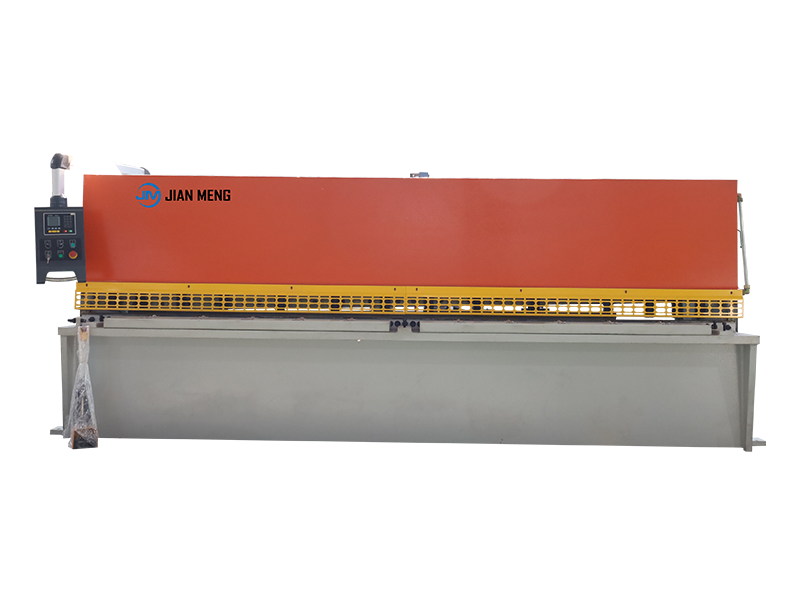What Level Of Shaping Accuracy Is Achievable When Using A Shrinker Stretcher?
Release time:2025-12-29
Visits:0
In precision metalworking—particularly automotive restoration, aerospace component fabrication, and custom metal art—shaping accuracy is quantified by dimensional tolerance (deviation from a target dimension) and surface consistency (uniformity of curves). For tasks like replicating a vintage car’s fender contour or forming an aircraft’s internal panel, the shrinker stretcher is a linchpin tool, capable of achieving professional-grade accuracy when paired with proper technique and material knowledge. Its precision capabilities are not arbitrary; they stem from the tool’s ability to induce localized, incremental plastic deformation, allowing fabricators to control metal shape within tolerances as tight as ±0.1mm—well within the standards of high-integrity industries.
A shrinker stretcher is defined by its dual-jaw design: concave “shrinker” jaws compress metal fibers to create convex curves, while convex “stretcher” jaws elongate fibers to form concave profiles. Unlike power tools that rely on brute force (e.g., hydraulic presses), it operates on micro-adjustment principles—each lever actuation modifies the metal by 0.5–1mm, enabling fabricators to “sculpt” curves rather than force them. This granular control is critical for accuracy: for example, when restoring a 1960s muscle car’s fender, the original part’s curvature may vary by just 0.3mm across its length; a shrinker stretcher’s incremental action ensures the replacement matches this contour, avoiding unsightly gaps or misalignment with adjacent body panels.
The achievable accuracy of a
shrinker stretcher is governed by three interdependent factors—material properties, tool quality, and operator proficiency—each of which directly impacts tolerance control:
1. Material Properties: Ductility Dictates Precision Bounds
Different metals exhibit varying responses to stretching/shrinking, which defines the minimum achievable tolerance. For example:
- Low-carbon steel (1018): Highly ductile, allowing consistent shaping within ±0.1–0.2mm. Ideal for automotive body panels, as it resists work hardening during repeated adjustments.
- Aluminum (6061-T6): Moderately ductile but prone to work hardening if overworked. Precision ranges from ±0.2–0.3mm, requiring annealing (heating to 350°C and slow-cooling) for tighter tolerances.
- Copper (C1100): Extremely malleable, enabling tolerances as tight as ±0.08mm—making it favored for custom decorative metalwork where surface smoothness is paramount.
Thickness also plays a role: thinner gauges (18–22 gauge) are more responsive to micro-adjustments, while thicker materials (14–16 gauge) require pre-annealing to avoid “springback” (elastic recovery that distorts the final shape) and may limit precision to ±0.3–0.5mm.
2. Tool Quality: Build Tolerance Translates to Workpiece Tolerance
Professional-grade shrinker stretchers (e.g., Baileigh, Eastwood) outperform entry-level models by virtue of tighter manufacturing tolerances:
- Jaw Alignment: Precision-machined jaws (with ≤0.05mm parallelism error) ensure uniform pressure distribution, preventing uneven stretching that causes “waviness” in curves.
- Lever Mechanism: High-quality pivot points (often hardened steel) minimize play, so each lever stroke delivers consistent force—critical for replicating adjustments across multiple workpieces.
- Mounting Stability: Industrial models feature heavy-duty bases that bolt to workbenches, eliminating vibration that can disrupt micro-adjustments. Entry-level tools, by contrast, may have loose jaw fit or flexing frames, limiting accuracy to ±0.5–1mm—insufficient for concours-level automotive restoration or aerospace applications.
3. Operator Proficiency: The Human Factor in Precision
Even the best tools require skilled operation to achieve maximum accuracy. Mastery involves two key practices:
- Incremental Shaping with Feedback: Experienced fabricators use “measure-adjust-measure” cycles—after each 1–2 lever presses, they check the curve with a contour gauge (for shape matching) or digital caliper (for dimensional accuracy). This avoids overworking the metal and ensures deviations stay within target tolerances.
- Scrap Metal Calibration: Before working on the final part, fabricators test the tool on a scrap piece of the same material/gauge. This calibrates their sense of force (e.g., “3 light presses on 20-gauge aluminum = 0.2mm stretch”) and identifies tool quirks (e.g., a slightly sticky jaw that requires extra lubrication).
In practical applications, these factors converge to define real-world accuracy:
- Automotive Restoration: For concours-winning classic cars, shrinker stretchers consistently achieve ±0.1–0.2mm tolerance—enough to match factory body panel gaps (typically 1.5–2mm) and pass visual inspection by judges.
- Aerospace Subcomponents: For non-load-bearing panels (e.g., cockpit trim), precision ranges from ±0.2–0.3mm, adhering to aerospace standard AS9100 for dimensional control.
- Custom Metal Fabrication: Artisans creating curved railings or decorative accents often target ±0.3–0.5mm, balancing precision with aesthetic flow.
A common misconception is that shrinker stretchers are “imprecise” compared to CNC machines. While CNC tools excel at mass-produced, identical parts, shrinker stretchers offer adaptive precision—critical for one-off projects like restoring a unique vintage car or repairing a damaged aircraft panel. CNC machines rely on pre-programmed dimensions; a skilled fabricator using a shrinker stretcher can adjust for subtle material variations (e.g., a slight thickness inconsistency in a vintage metal sheet) that would throw off automated tools.
To maximize accuracy, fabricators must also address common pitfalls:
- Over-Stretching/Shrinking: Excessive force causes irreversible distortion (e.g., wrinkling in steel, thinning in aluminum). Using light, repeated presses avoids this.
- Jaw Contamination: Metal shavings or debris in serrated jaws create uneven pressure. Cleaning jaws with a wire brush after each use maintains grip consistency.
- Ignoring Springback: Some metals (e.g., stainless steel 304) exhibit slight springback after shaping. Compensating by over-adjusting by 0.1mm accounts for this effect.
In conclusion, the shrinker stretcher is a high-precision tool capable of achieving ±0.1–0.5mm shaping tolerance—depending on material, tool quality, and operator skill. Its strength lies in combining granular control with adaptability, making it indispensable for applications where “close enough” is insufficient. For automotive restorers chasing factory-perfect body panels, aerospace technicians fabricating precise trim, or artisans crafting intricate metalwork, mastering this tool is the gateway to professional-grade accuracy that balances function and aesthetics.
For those refining their technique: How have you calibrated your shrinker stretcher for tight-tolerance projects, or what material-specific challenges have you overcome? Sharing these insights advances best practices in precision metalforming.


 English
English  中文
中文  Arabic
Arabic  Russian
Russian  Spanish
Spanish  Portuguese
Portuguese  French
French  German
German  Hindi
Hindi  Thai
Thai  Vietnamese
Vietnamese  Khmer
Khmer  Italian
Italian  Turkish
Turkish  Korean
Korean  Belarusian
Belarusian 


